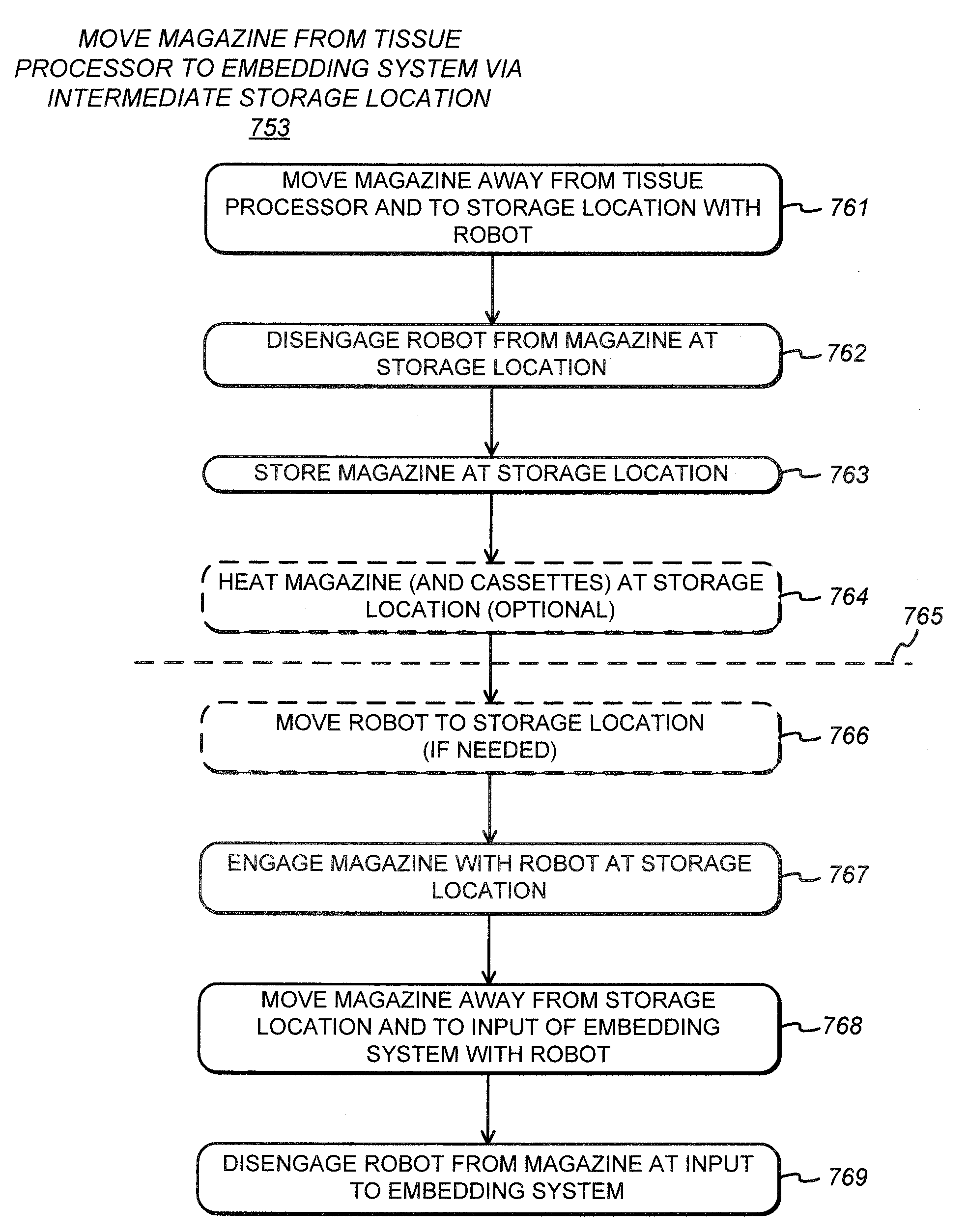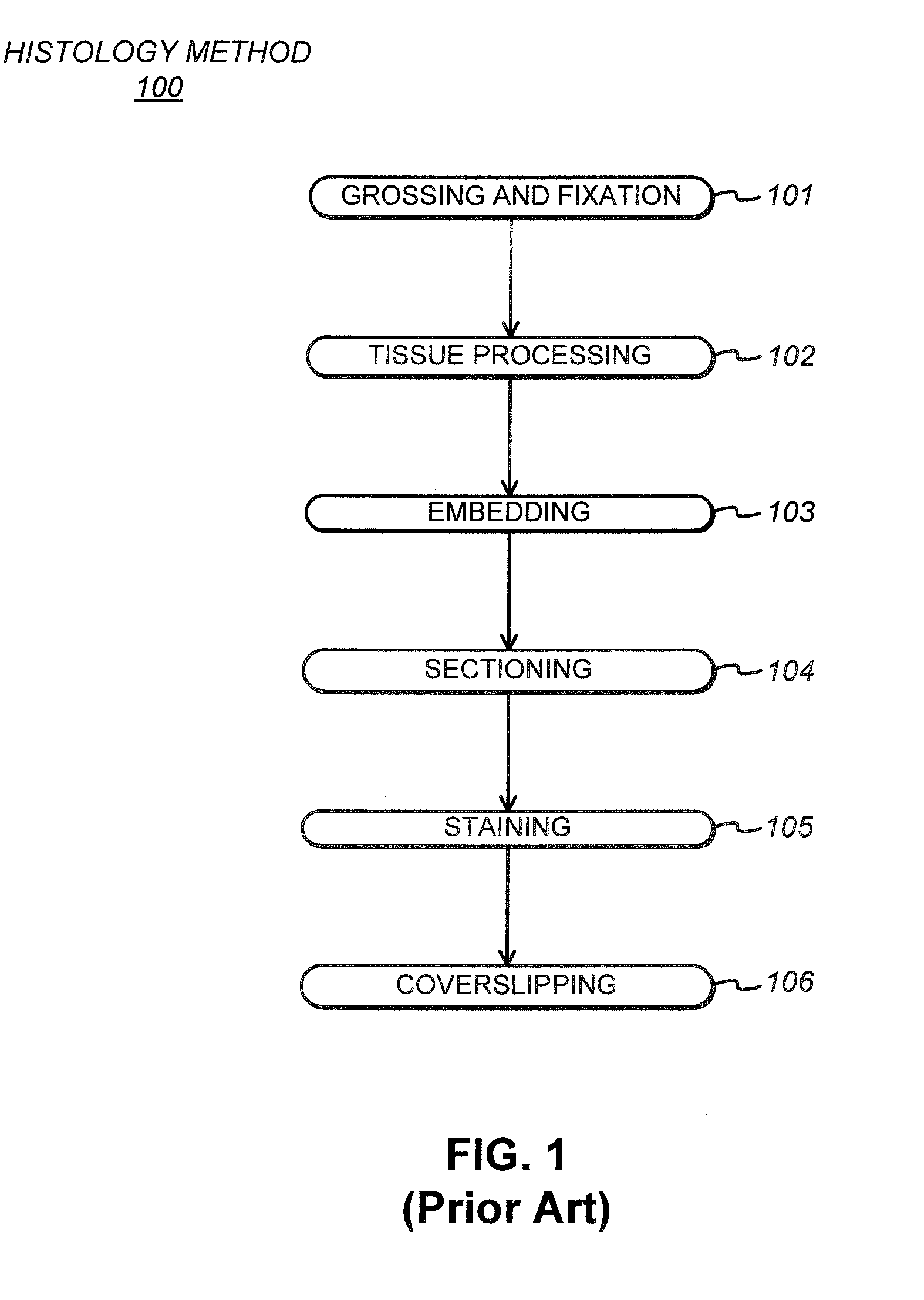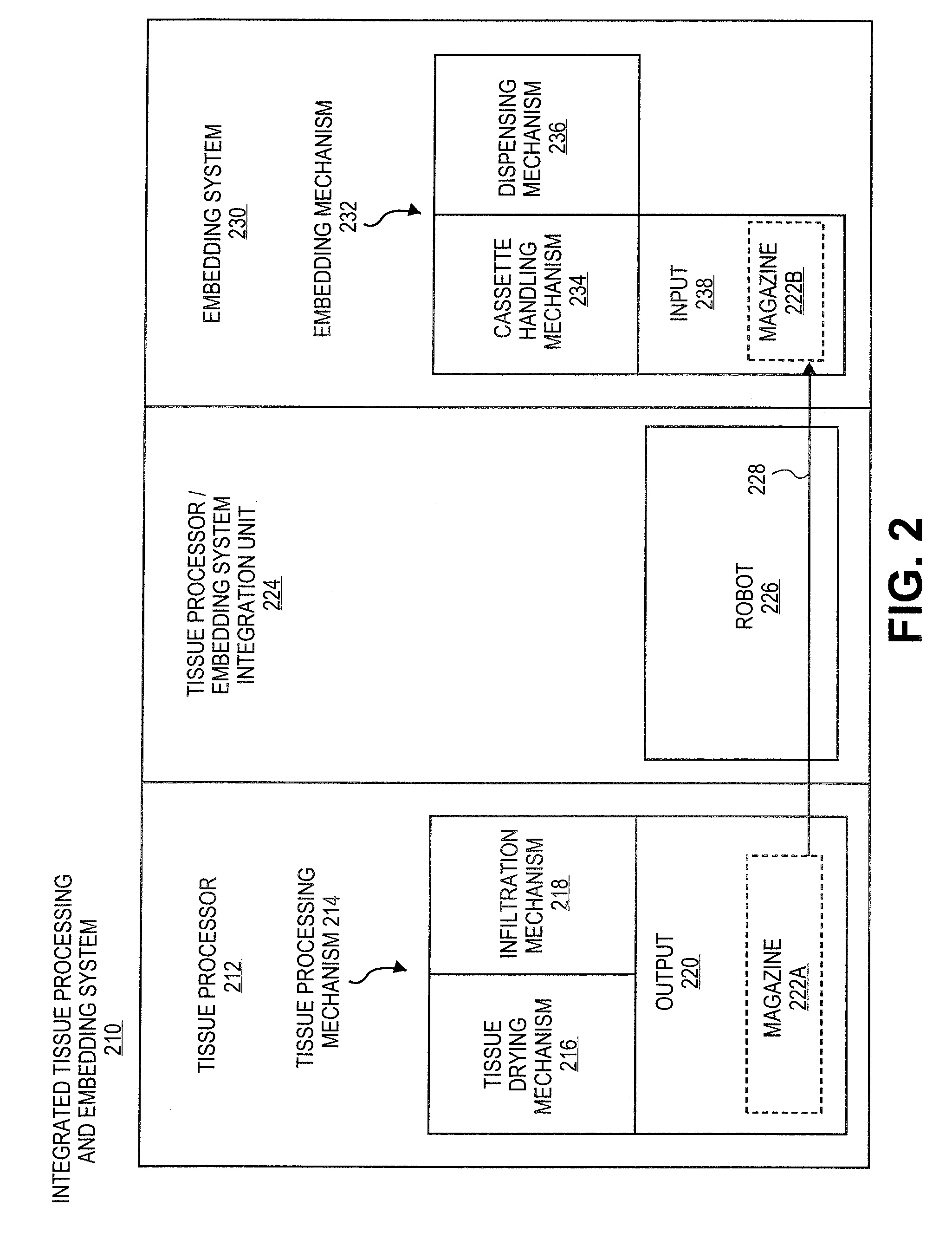Integrated tissue processing and embedding systems, and methods thereof
a tissue processing and tissue technology, applied in the field of integrated tissue processing and embedding systems, can solve the problems of affecting examination or analysis, and affecting the examination effect of the tissue,
- Summary
- Abstract
- Description
- Claims
- Application Information
AI Technical Summary
Benefits of technology
Problems solved by technology
Method used
Image
Examples
first embodiment
[0033]FIG. 2 is a block diagram of integrated tissue processing and embedding system 210. For convenience, the integrated tissue processing and embedding system may be referred to simply as an integrated system.
[0034]The integrated system includes tissue processor 212, embedding system 230, and tissue processor / embedding system integration unit 224. The tissue processor and the embedding system may perform their individual functions according to known instruments. As such, a detailed understanding of the inner mechanisms or workings of the tissue processor and the embedding system are not necessary. Accordingly, only a brief description will be provided.
[0035]Initially, a magazine having multiple cassettes, for example, may be input into the tissue processor through an input (not shown). Each of the cassettes may have a tissue, which has potentially been grossed and / or fixated.
[0036]FIG. 3 is a representative embodiment of cassette 340 which is suitable. In this embodiment, cassette...
second embodiment
[0066]FIG. 6 is a block diagram of integrated tissue processing and embedding system 610, which for convenience may simply be referred to as integrated system. The integrated system includes tissue processor 212 and embedding system 230. The tissue processor and the embedding system, and their components and functions, may optionally be similar to, or the same as, those of FIG. 2. To avoid obscuring the description, these aspects will not be repeated.
[0067]The integrated system also includes tissue processor / embedding system integration unit 624, or simply the integration unit. In an embodiment where a controller is linked to a tissue processor and an embedding system to control the transfer of a magazine(s) from the tissue processor to the embedding system, the controller may also be electronically linked to the integration unit.
[0068]Integration unit 624 has robot 626. Robot 626, and its components and functions, may be similar to those of robot 226 of FIG. 2, with a few notable e...
fifth embodiment
[0140]FIG. 11 is a block diagram of integrated tissue processing and embedding system 1110, which may be referred to simply as the integrated system, along with an embedding system 230. The integrated system includes tissue processor 212, and tissue processor / embedding system integration unit 1124, which for may be referred to simply as the integration unit. The tissue processor has output 220. The integration unit has storage location 1124 and robot 1126.
[0141]In one or more embodiments, integration unit 1124 and robot 1126 may be functionally or operatively coupled or connected with tissue processor 212, but not with embedding system 230. In one or more embodiments, as shown by arrow 1157, the robot may transfer magazine 222A from output 220 of the tissue processor to storage location 1156 of the integration unit as magazine 222B. Magazine 222B may be transferred from the storage location to the embedding system manually.
PUM
 Login to View More
Login to View More Abstract
Description
Claims
Application Information
 Login to View More
Login to View More - R&D
- Intellectual Property
- Life Sciences
- Materials
- Tech Scout
- Unparalleled Data Quality
- Higher Quality Content
- 60% Fewer Hallucinations
Browse by: Latest US Patents, China's latest patents, Technical Efficacy Thesaurus, Application Domain, Technology Topic, Popular Technical Reports.
© 2025 PatSnap. All rights reserved.Legal|Privacy policy|Modern Slavery Act Transparency Statement|Sitemap|About US| Contact US: help@patsnap.com



